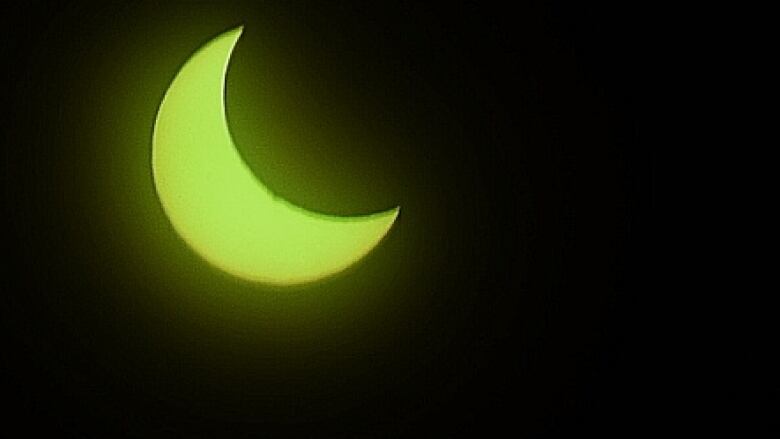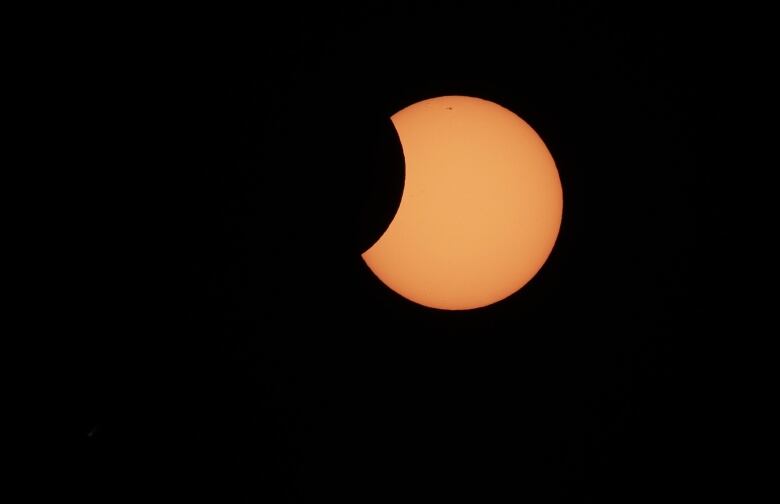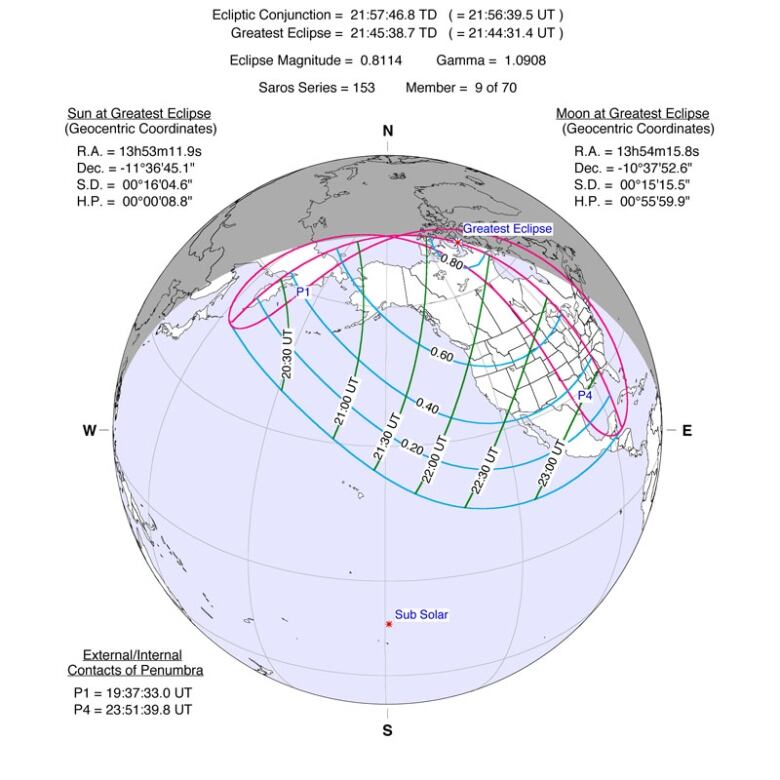Partial solar eclipse visible across most of Canada
Here are 6 ways to watch the eclipse safely

The moon will take a bite out of the sun Thursdayafternoon during a partial solar eclipse that will be visible across much of Canada, but not in Atlantic Canada.
The eclipse will start in Western Canada around 1:30 p.m. PT in Vancouver and Victoria and move east. At its peak around 3 p.m. PT, the moon will cover about two-thirds of the sun when viewed from southern B.C.
Generally, the eclipse will be greater (cover more of the sun) the further west and further north a viewer is.
- Send us your photos of the partial solar eclipse(but please follow the safe eclipse viewing guidelines)
In Toronto, Ottawa and Montreal, the eclipse will start around 5:40 p.m. ET. The sun will set during the eclipse, after the moon covers about one-third of the sun.
"It's neat to see," says J. Randy Attwood, executive director of the Royal Astronomical Society of Canada. "As the sun gets low, it makes a great opportunity to take some cool photos."
If you live west of the Saskatchewan-Manitoba border, you'll be able to watch the entire eclipse over more than 2.5 hours but don't stare directly at it.

While this only a partial eclipse, it's just as dangerous to look at as a total eclipse the brightness of the sun can cause severe damage to the retina of your eye. Using binoculars or a telescopeis even more hazardous, unless they are equipped with special eclipse filters.
That said, you have a few of options for viewing the eclipsesafely.
- Using a pinhole camera.Poke ahole in a piece of cardboard with the tip of a pen and position the cardboardso that the sun is on one side and a piece of paper is on the other, about half an arm's length or an arm's length away. That will project the sun's image onto the sheet of paper."That's the safest way to do it," Attwood says. NASA Science News also suggests looking for crescent-shaped images cast on the ground and walls during the eclipse.
- Through No.14 welder's glass or darker.
- Via a digital camera screen. However,Attwoodsaysthat without a special camera filter, it's hard to get the proper exposure to take good photos of the eclipse.
- Though special eclipse glasses.These protect your eyes using Mylar or dark plasticlenses. You canbuy them at telescope or science storesor at eclipse viewing events. Astronomy author and photography Alan Dyer told CBC's The Homestretch that such glasses typically only cost about $1.
- Through binoculars or telescopes equipped with special filters.You can buy these at telescope or camera stores. Or you might get access at eclipse viewing events in your area.
- Online via your computer screen.Slooh, a service that streams telescope images of celestial events online, will be streaming the eclipse from the Prescott Solar Observatory in Arizona and other sites starting 5 p.m. ET., along with commentary from astronomers.
A number of groups across the country are also hosting viewing events.
For example, Dyer said the Calgary branch of the Royal Astronomical Society is hosting one at Glenbow Ranch Provincial Park (registration required) and the University of Calgary is hosting another.













_(720p).jpg)


 OFFICIAL HD MUSIC VIDEO.jpg)
.jpg)



























































































